
Boatbuilders are applying complex technology in other industries
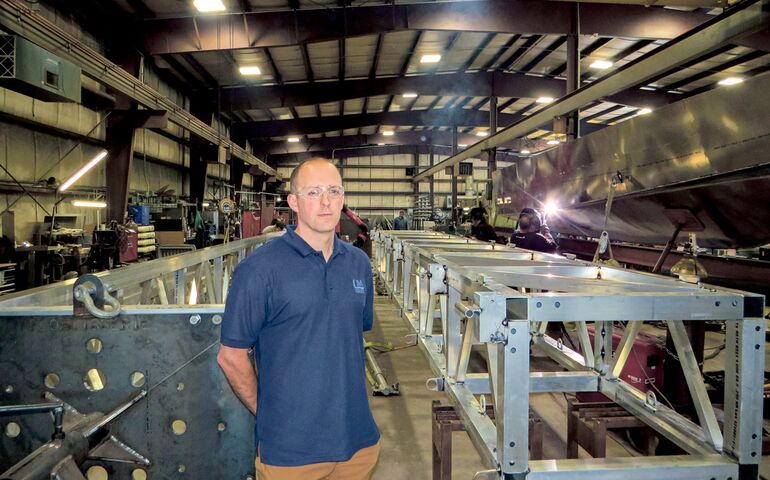 Photo / Courtesy of Bill Froehlich
Jonathan Egan is general manager of the Lyman-Morse fabrication shop, whose jobs go well beyond boatbuilding.
Photo / Courtesy of Bill Froehlich
Jonathan Egan is general manager of the Lyman-Morse fabrication shop, whose jobs go well beyond boatbuilding.
On any given day, the 15,000-square-foot fabrication facility at Lyman-Morse, the Thomaston builder of luxury yachts, is humming with the sound of industrial-scale machinery.
The site is a few miles from Lyman-Morse’s main boatbuilding yard. But the scope goes far beyond boats here. In fact, the shop was set up specifically to offer fabrication services for clients seeking applications for all kinds of products — food-grade conveyor belts, specialty winches, photovoltaic rack systems, architectural structures, components for industrial machinery and plastic holding tanks, to name just a few.
Lyman-Morse’s fabrication area represents an emerging trend, as boatbuilders discover crossover applications of materials, techniques and expertise, commonly used in their industry. Given their expertise with aluminum, wood, fiberglass and advanced composites like carbon fiber, boatbuilders find they’re particularly well-positioned to create products for on-land use.

From architecture to aquaculture
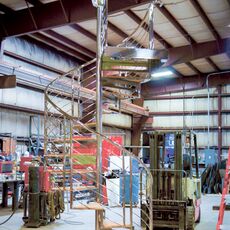
At Lyman-Morse’s fabrication site, General Manager Jonathan Egan points to a photo of a recently completed spiral staircase for a coastal Maine customer. It perfectly illustrates the application of boatbuilding materials to other uses. The framework was made from mirror-polish stainless steel and the treads from teak.
“Teak is a common boatbuilding material and mirror-polish stainless steel is used on boat railings to help resist corrosion,” says Egan, adding that teak is rot-resistant. Resistance to rot and corrosion are key components on a boat that’s beaten on by wind, salt water and sun, but also for high-traffic stairs.
“There’s a lot of carryover between the boat world and the architectural world, as well as food-grade items,” Egan says. “Food-grade conveyor belts are not going on the ocean, but they’re still subject to corrosion, which they want to avoid in the food-processing industry.”
Working with huge machinery like automated cutting systems and a giant plasma table that cuts through thick sheets of steel like butter, the site fabricates stainless steel, aluminum, bronze, steel, titanium and plastics.
On a recent visit, jobs included construction of floats for the open-ocean aquaculture industry, which is expected to be a long-term job, given the growing aquaculture market. (An unrelated job called for making parts for a specialty oven that tempers metal for the tiny components in hearing aids.)
Then there’s urban architecture. The shop manufactured a complicated canopy structure for Baruch College in New York City, using an innovative construction technique that sandwiches an aluminum core and stainless steel skin together in one panel, resulting in an ultralight and durable material. A 16-foot-tall spiral staircase for a 24th-floor Manhattan apartment was recently in production.
When Egan joined Lyman-Morse in 2011, he drummed up business by knocking on the doors of contractors. “I had to help them understand that we weren’t just a boatbuilding company,” he recalls. “That was a bit of a hurdle. Contractors would immediately recognize the name ‘Lyman-Morse’ and their brains would go straight to luxury yachts. They couldn’t imagine us building rough structural steel components.”
Egan worked on getting out the message. “I’d show them the structural steel jobs we’d done, staircases and things like that,” he says. “I explained to them that we’ve diversified. And the boatbuilding side of things did open a lot of doors. People were interested immediately: ‘Oh, Lyman-Morse. You build beautiful boats.’ Everyone has some kind of relationship with somebody who has a boat. It helps get your foot in the door.”
Reverse trend
Often, the crossover occurs the other way around. Materials like fiberglass, carbon fiber and plastic resin have largely been refined through the chemical and aerospace industries before being adopted by the boatbuilding industry.
The aerospace industry, for instance, developed the practice of impregnating carbon fiber material with resin (creating a composite material commonly called “pre-preg”), then laying the material in a mold and heat-treating it. Today, that process has been adopted by high-end builders.
“High-performance pre-preg materials are aerospace-grade materials that have trickled down to the boatbuilding industry, because boatbuilders are always looking for something a lot more high-performance,” says Steve Hassett, president of Custom Composite Technologies Inc., a Bath company he started with his wife Maureen. “The aerospace industry has really high standards, so they do a lot of the legwork. Not to mention that they have pretty good size budgets to work with.”
Hassett has been a leader in the diversification trend. He started as a wooden boat builder, then went to work for custom racing sailboat builder Goetz Custom Sailboats in Bristol, R.I. That work included jobs for America’s Cup syndicates, which are always looking to the most advanced design and materials.
“The simple fact is that they’re trying, essentially, to design and build these boats right on the edge of failure,” Hassett says. “That’s the only way you can be really competitive. There are safety factors, but you can’t have such a huge margin of safety that you’re never going to win, because your boat’s going to be too heavy. They’re building them strong enough to finish the race, but light enough to be competitive.”
Hassett’s company has produced a wide range of products. It has worked with Massachusetts Institute of Technology solar-vehicle teams to build molds for their vehicles. It has produced fiberglass railing covers for residential use, a composite mold for a ride at Disneyworld and a refrigerated box for shipping pharmaceuticals. The company was hired by Zaha Hadid Architects in London to develop a wall relief and the mold parts for a carbon fiber, ceiling-mounted sculpture. It developed C-shaped leg molds for an “interactive” robot called the Maneuver RHex and developed by University of Pennsylvania students. Recent projects include a weatherproof “radome” structure for cellphone towers, and carbon fiber components for guitar interiors.
Fiberglass can do a lot of structural work that other materials can’t. If you’re building a spaceship of a house, it’s hard to get wood to bend like that.
— JB Turner Front Street Shipyard
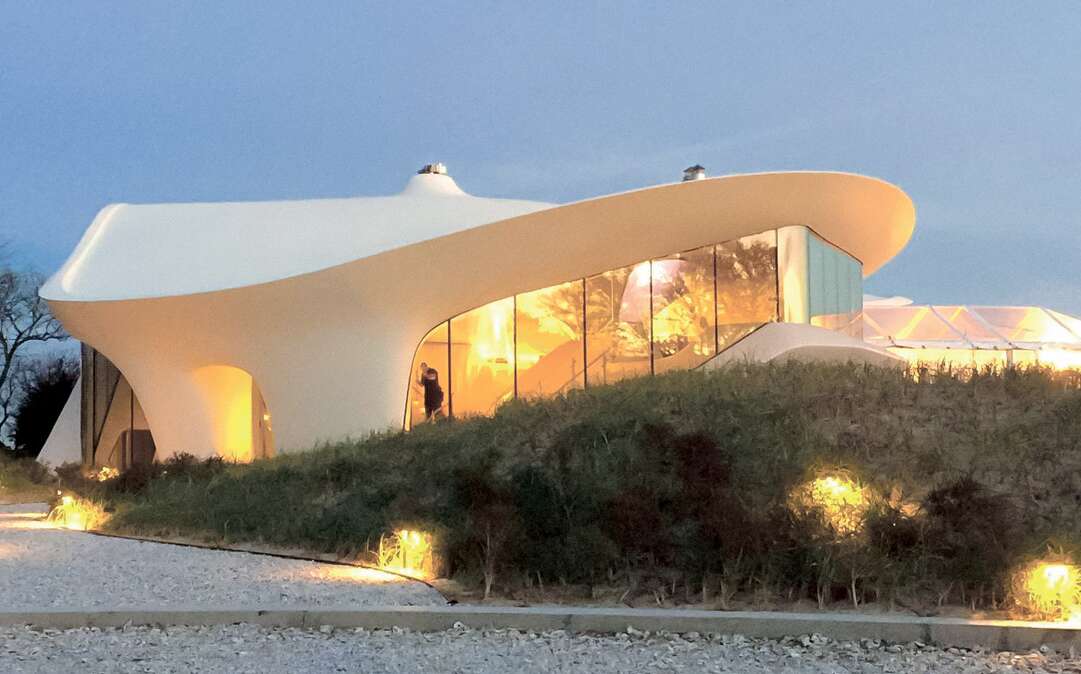
Fiberglass house
In Belfast, Front Street Shipyard, was hired to help with the construction of a house made of fiberglass — a routine material for boatbuilding but unique for houses.
“We were contacted by a contractor in New York,” says Front Street President JB Turner. “They were building 15,000-square-foot fiberglass house in East Hampton, N.Y.”
The house is a swooping structure with compound curves that wouldn’t have been possible with conventional wood or steel, he explains. “Fiberglass can do a lot of structural work that other materials can’t,” he says. “If you’re building a spaceship of a house, it’s hard to get wood to bend like that.”
Fiberglass is also great for durability in all conditions, he adds. “Take a conventional house and put into onto the ocean, it would last two seconds,” he says. “But take a fiberglass boat on the ocean, and it can withstand any storm.”
Front Street Shipyard was hired to paint and “fair” the house. Best understood by boatbuilders, fairing is a meticulous process for ensuring a painted surface is completely smooth. “Most industries don’t have to get into the fairing process, certainly not house builders,” Turner says.
Beautiful and practical
Siblings Ben and Emily Davis saw the opportunities for crossing boatbuilding expertise with non-boat applications when they started OpBox. The business uses portable storage containers as retail pop-ups, hospitality locations, offices and trade-show booths. They contract with Gamage Shipyard in South Bristol to provide interior finish and install marine-grade systems, including electrical and plumbing work.
Watertight boxes, durable but beautiful finishes and marine-grade systems, suitable for boats, translate well to the OpBoxes, which are designed to be weather-resistant as technically advanced mobile structures, says Ben Davis.
The choice of Gamage was natural, says Davis, whose background includes yacht club management and founding True Course Yachting, a services business for boat owners.
Gamage had just finished its own unusual project: a customized, high-end refit of a bus.
“It was an ‘only in Maine’ kind of thing,” Davis says.
For OpBox, he says, “It’s the right group of craftspeople who have the innovative mindset that isn’t just focused on boats, but understands the unique opportunity we have in the boatbuilding world.”
Boatbuilders understand the demands on small modular spaces that move around — spaces that need “to be beautiful but also practical,” Davis says. “The lights and the stove need to turn on. Boatbuilders have that mindframe because when they’re building boats, the boats need to not only be beautiful, they need to work.”
As portable units, the pods must be suitable for movement on flatbed trucks.
“Boatbuilders are the best in the world at making sure your stuff isn’t flying around,” he says “A lot of thought goes into securing things. That’s a natural instinct with these guys.”
In one pod, the hardwood floor looks like the deck of a boat, he notes.
“We benefit from that aesthetic, and it’s uniquely Maine,” he says.
The Maine boatbuilding brand, in fact, contributes to marketing of the OpBox.
“We have some of our bigger customers up from, say, New York City,” he says. “We drive them up the coast and down the peninsula to Gamage, they meet the authentic Maine boatbuilder, and there’s their OpBox being built right alongside a 40-foot Hinckley sailboat. That experience is one-of-a-kind.”

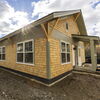





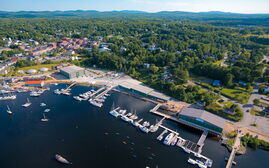
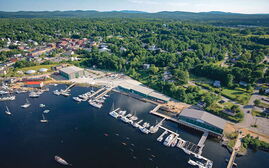
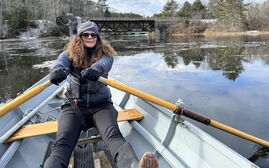




0 Comments